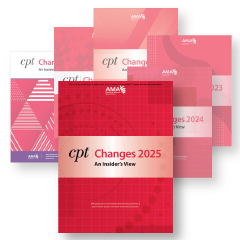by Find-A-Code™
Mar 15th, 2024
Healthcare providers rely on a variety of medical billing code sets to document patient interactions for payment. Accordingly, clinicians need to account for the time they spend on individual cases for Evaluation and Management Services (E/M) under the Common Procedural Terminology (CPT) code set. A few years ago, a new total time metric was introduced for this very purpose.
The new metric was implemented in 2021. Three years on, it seems to be working just fine. But here is the million-dollar question: is the new metric better than the one it replaced, or does it simply represent a new way to describe the same thing?
The best way to answer the question is to look at how E/M services were coded before and after the change. After discussing the differences, the answer should be pretty clear.
Time Spent Face-to-Face
The whole point of billing for E/M services under CPT is to make sure that clinicians get paid for providing patient care. But care is hard to quantify without some sort of standard. Prior to 2021, the billing standard was based on the amount of time a clinician and patient spent face-to-face.
If a primary care physician spent 15 minutes with a patient in the exam room, that is exactly what the patient's insurance company would be billed for – regardless of whether the doctor did anything else relating to that patient's case outside of the exam room.
The old metric was a direct patient metric. If something didn't occur in the exam room during a face-to-face visit, it was not considered billable. The new metric changes that. It is based on total time rather than just face time.
Billing for Everything
With the new E/M total time metric under CPT, clinicians can bill for other services that don't take place in the exam room. Here are just four examples:
- Reviewing medical records and test results
- Coordinating with other members of the healthcare team
- Dictating notes about the encounter being billed for
- Continuing patient counseling and education
That last point is exceptionally poignant given the growing prevalence of telemedicine. Clinicians may counsel and educate over the phone or via video chat. These extra services can be counted in the total time metric. However, there is one caveat: all the services must be provided on the same day.
Services provided on different days must be coded as separate encounters. This makes things a little bit more difficult for clinicians who might be questioned for providing billable E/M services separate from a documented face-to-face visit on a different day.
Coders Have to Pay Attention
It is ultimately the medical coder's responsibility to take clinician notes and translate them into billable codes. That means coders have a tremendous responsibility across the board. But when it comes specifically to the total time metric, they need to really pay attention.
Under CPT, time is divided into blocks for different procedures and services. Coders need to know which block to apply in a given situation. They also need to pay attention to each service and who performed it. Why? Because it is not just physician time that is being tracked. Services provided by any qualified healthcare professional on that same day can be included in the total time.
The new metric is promoted as being a means toward more accurate reimbursement. Is it better than the old metric? When you consider the fact that healthcare professionals provide services outside of face-to-face interactions, it is. They deserve to be compensated for all their time.


 Quick, Current, Complete - www.findacode.com
Quick, Current, Complete - www.findacode.com